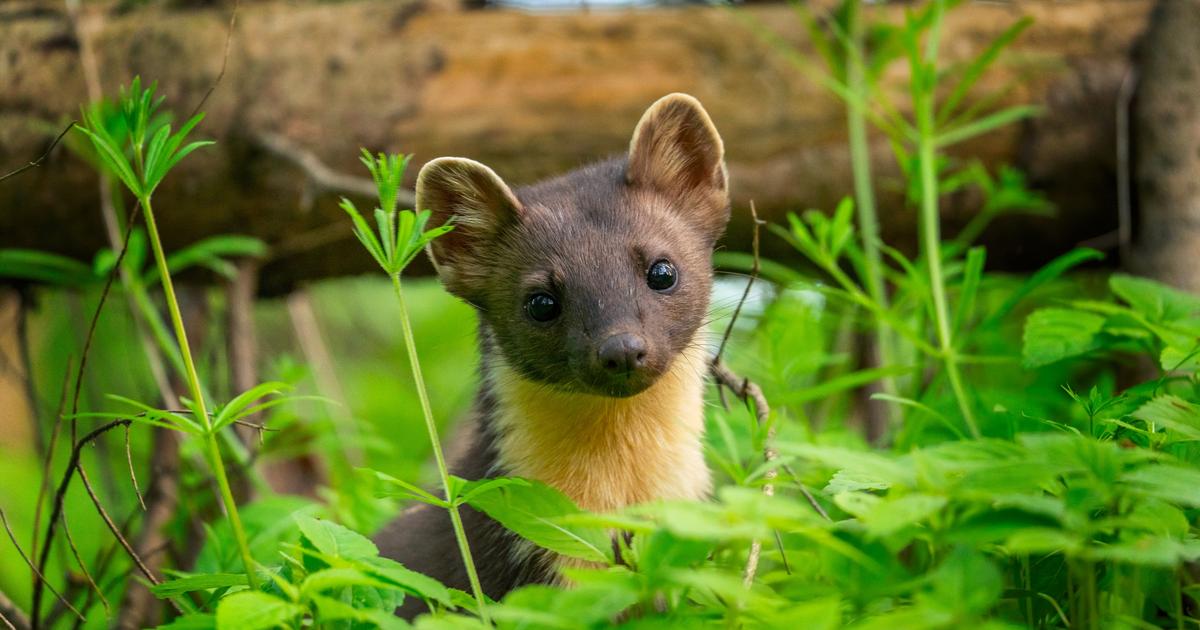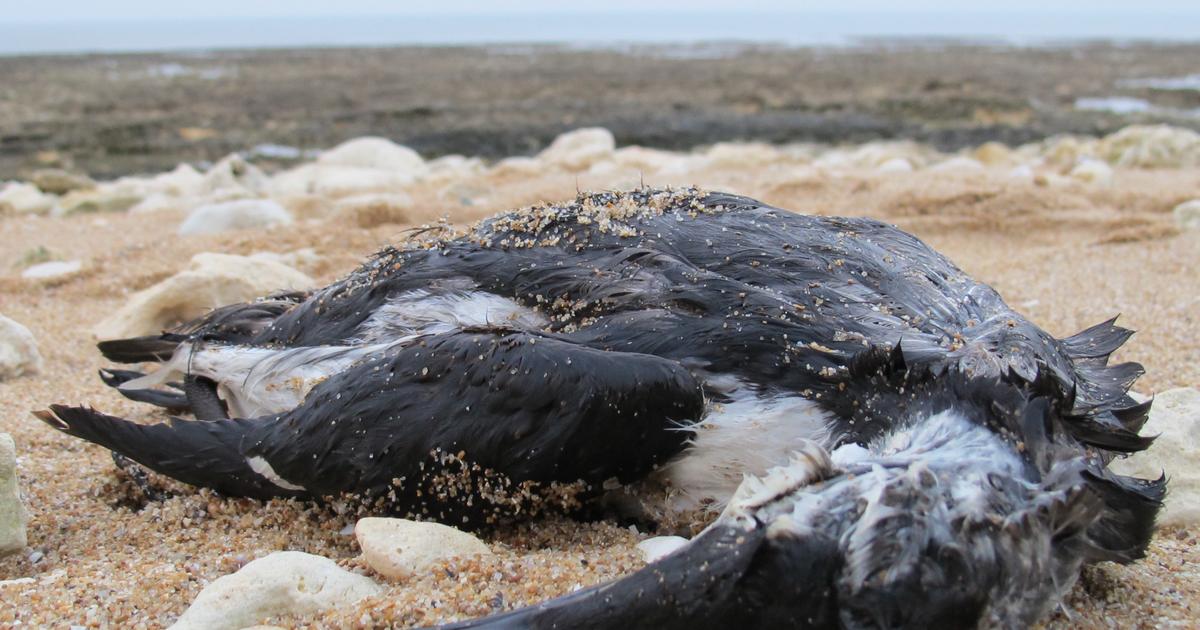Name three species of birds familiar from Greater Paris, apart from pigeons and sparrows… A glue?
If you don't take the time to observe the local birds and their sometimes shimmering colors, others will do it for you.
Nearly 80 volunteers crisscrossed the territory of 814 square kilometers for 4 years, from 2015 to 2018 inclusive, in search of the breeding birds of the metropolis, to establish the Atlas of the breeding birds of Grand Paris, freshly edited by the LPO Ile- of France.
We knew that Ile-de-France has 167 species of nesting birds and Paris 60, we now know that there are 126 in Greater Paris.
Better still, this new Atlas, the first of its kind on this scale, used exactly the same methodology on the surface of intramural Paris as when the inventory devoted to the capital was carried out between 2005 and 2008. “We therefore have a element of comparison 10 years apart ”, rejoices Frédéric Mahler, regional delegate of the League for the Protection of Birds in Ile-de-France.
Less pesticides, more birds
Surprise, "if the population of most breeding pairs in parks and gardens is constant, that of the most common has clearly increased," says the specialist.
These are generally regionally healthy, stable or increasing species.
But their development in Paris is often clearly more positive than in Île-de-France: + 100% for the Troglodyte in Paris but stable in the region.
Familiar robins: + 150% vs. + 34%;
Blackcap: + 100% against stability in Île-de-France, etc.
It is reasonable to consider that these species have benefited from the evolution of the practices of gardeners of municipal green spaces, who have banned pesticides and herbicides since 2009 (2015 for cemeteries) and have developed differentiated management, which allows the development of areas of spontaneous vegetation in many large parks.
An evolution that has led in its wake other administrations such as the Senate for the Luxembourg Garden, the Ministry of Culture for the Tuileries Garden or private owners (including some social landlords) to do the same.
"Admittedly, there is" no absolute proof of this link between "zero phyto" and the development of certain species of birds, but its reality has been established for butterflies "concludes Frédérick Mahler.
On the other side of the board, the aerial insect hunters (the window swallow or the black swift), and the granivores who depend on the spontaneous vegetation of the wastelands for the seeds and the insects they find there. suffer from the disappearance of Parisian wastelands or their transformation into less disorderly green spaces.
In addition to their diet, they have another point in common since their nests are easily destroyed or blocked during cleaning operations.
Newsletter The essential of 75
A tour of the news in Paris and in the IDF
Subscribe to the newsletterAll newsletters
This Atlas
(Atlas of the breeding birds of Greater Paris, 231 pages, 25 euros. Order online at lpo-idf.fr)
, the first of its kind, will also make it possible to "compare the capitals on a European scale", impatiently Philippe Clergeau, professor of urban ecology at the National Museum of Natural History.
The feral rock pigeon
Impossible to know the precise number of pigeons in Ile-de-France.
The last census in Paris dates from 2018 and reported 23,000 birds./Olivier Boitet / LE PARISIEN
The unmissable feral rock pigeon is everywhere.
“Unsurprisingly, it is spread over the whole of Greater Paris and the most densely populated areas are also those which are the most urbanized, including inner Paris and the northern suburbs,” notes the LPO.
Impossible, on the other hand, to quantify the population of breeding pair.
“No estimate of the population of Ile-de-France nor of Greater Paris is available: all the figures put forward are therefore pure inventions, except for intramural Paris, details the Atlas.
A counting operation for Parisian pigeons took place in 2018 thanks to the Arheo and Espaces associations.
The result obtained, 23,000 individuals, is therefore the first credible figure.
However, it is difficult to estimate the proportion of non-breeders among these individuals.
"
The ring-necked parakeet
The number of parakeets has continued to increase in recent years, particularly in the Ile-de-France parks.
/ ISTOCK
Also present everywhere, the r-collie parakeet is growing exponentially.
The exotic bird, which is very popular in pet stores, escaped massively from a warehouse in Orly in 1974, then from Roissy in 1990. Its population estimated at 1,000 in 2008, climbed to 2,700 in 2012 and then 5,000 in 2015, ie an annual increase of 25%.
And even 40% at Parc de Sceaux (Hauts-de-Seine) went from two pairs to 80 between 2002 and 2014. Intra-muros, the first nesting dates back to 2008, at Parc Montsouris.
It then continued its expansion in the old parks: Luxembourg Gardens in 2010, Kellermann in 2011, Val-de-Grâce in 2013, the Jardin des Plantes the following year, then the Buttes-Chaumont, Père-Lachaise ...
Canada geese
Wild geese proliferate in parks and leisure centers./LE PARISIEN
They have invaded the Ile-de-France leisure centers, and more generally all the bodies of water bordered by vast lawns: the Canada geese thrive in the outer suburbs and occupy almost all of Greater Paris: it occupies the parks of La Courneuve and Sausset. (Seine-Saint-Denis), that of Sceaux (Hauts-de-Seine), the Créteil lake and the Plage-Bleue park in Valenton (Val-de-Marne), niche in the two Parisian woods and even intra -muros.
Its proliferation is such that the Driee follows the main nesting sites to sterilize the eggs.
In 2018, 171 nests were sterilized (947 eggs).
The black swift
The black swift is in sharp decline in Ile-de-France.
/ Liszt Collection / Daniele Occhiato / Naturimages
The black swift
Even though it ranks fifth among the most frequent breeding species, its population is also in sharp decline.
"It is faced with the decline in the number of insects due to the use of insecticides, the filling of its nesting sites during habitat repair work, climate change leading to periods of critical heatwaves for young people located under roofs ”, lists the LPO.
The house sparrow
The number of sparrows is in free fall in Paris./Olivier Boitet / LE PARISIEN
Hecatomb among house sparrows, whose population has fallen by 73% in 15 years in intramural Paris.
It would be a direct victim of gentrification and the resulting transformations of working-class neighborhoods, with the arrival of more privileged social categories who rehabilitate certain homes: the cavities of the old facades are filled in particular during thermal insulation operations by the outside… and the sparrows have no more places to nest.
The wastelands are disappearing in favor of real estate projects depriving them of the vegetation and insects that go with it… In Paris, “the species is therefore more abundant in a large eastern half, while certain sectors of the 16th century are close to complete desert!
notes the LPO.
The negative correlation between the social level of a neighborhood and the density of the sparrow, highlighted ten years ago, remains visible.
"
The kestrel
The common kestrel is the most common raptor in Greater Paris./ISTOCK
At the end of the chain, the kestrel, deprived of its privileged prey to feed the young, is also losing numbers: the estimated population of 35 to 50 pairs ten years ago would now be between 25 and 35. It also nests in Notre-Dame cathedral than at the Arc de Triomphe or the Dôme des Invalides than in more discreet places.
This usual occupant of the plains of the Ile-de-France region remains the most widespread bird of prey in Greater Paris where “he very quickly adapted to high buildings, towers of chateaux and churches, even water towers, as in the Sausset en Seine park. -Saint-Denis, and even at the top of a bridge stack under the deck of the Gennevilliers viaduct ”, observed the LPO observers who also saw it on buildings in the cities of Bobigny or Aulnay-sous-Bois .
The peregrine falcon
The peregrine falcon is back in Ile-de-France.
/ ISTOCK
Others are doing better, like the peregrine falcon.
After “several decades marked by the absence of nesting of the species, the 2000s marked the return of the Pilgrim as a nester in Ile-de-France: first in 2006 in the valley of the Seine in the Yvelines, then in Greater Paris in Ivry-sur-Seine in 2011 and finally in intramural Paris for the first time in 2013.
The blue tit
The number of blue tits is increasing more in Paris than in the rest of Ile-de-France. / Istock
The blue tit is also gaining ground.
The Atlas of nesting birds of Ile-de-France, released in 2017, gives a range of 95,000 to 120,000 pairs for the region.
In Paris, it is estimated at 680 pairs that nest in large parks as well as in small squares or trees in the alignment.
Or an increase of 40% in ten years.
Like “its cousin the great tit whose population grows by more than 60%”, it is an “example of good health of common species (crested wren, common robin, garden creeper, Eurasian wren, black-headed warbler, etc.) which are increasing more in Paris than in the rest of the region ”, analyzes the LPO for whom it“ is not forbidden to see the results of the zero-phyto policy decreed by the mayor of Paris since 2007, and 2015 for cemeteries.
"
Brown gull
Arrived in Paris in 2005, the brown gull is in full expansion./ISTOCK
The brown gull is not limited to the seaside. It arrived in Paris in 2005 where it occupies certain roofs in the center and in Bastille.
"The numbers have gone from three or four couples to 15 in ten years," said the LPO.
The increase is therefore real, but it is still too early to say whether this growth will continue.
The species "probably nested in a mixed pair with herring gulls", less rare since around a hundred nesting pairs would have been recorded within the city walls.
The pontic gull
Even rarer, the pontic gull: “a male has reproduced on the roofs of rue Buffon (Paris V).
This is the first known case of reproduction of this species in France.
But why only a male?
“As is often the case with pioneer colonizing gulls, it has paired with a female of another species, in this case a herring gull,” decrypts the LPO.
The ring that was put on him when he was a chick in May 2012 even let us know that he came from Poland.


/cloudfront-eu-central-1.images.arcpublishing.com/prisa/2QNGIEEKTFGRXYFY7DZOTWJJAI.jpg)






